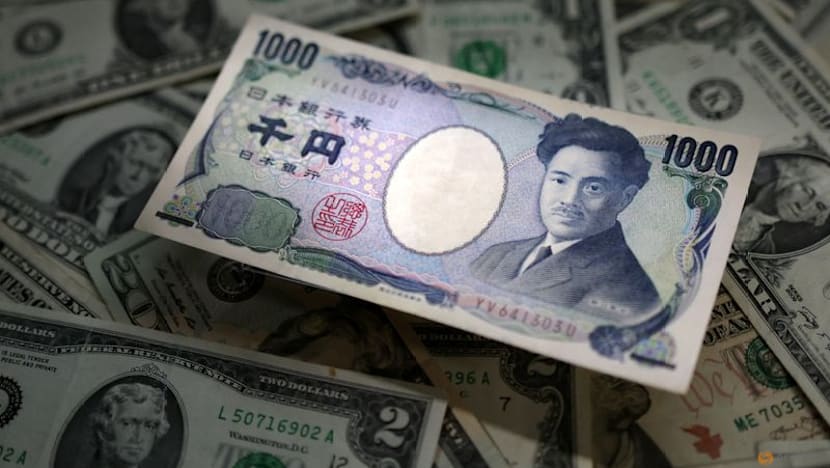Business
Yen Declines Sharply Amid Bank of Japan’s Dovish Stance

The Japanese yen is poised for its worst monthly loss since July, primarily due to a less hawkish approach from the Bank of Japan (BOJ) regarding future interest rate hikes. On Friday, the yen traded at 153.96 against the U.S. dollar, showing a slight recovery of 0.09 percent. However, the currency is still facing a notable decline of 4.1 percent this month as traders reacted to the BOJ’s decision to maintain interest rates at 0.5 percent.
Japanese Finance Minister Satsuki Katayama stated that the government is monitoring foreign exchange movements closely, heightening concerns over the yen’s depreciation. Data released on Friday indicated that core inflation in Tokyo accelerated in October, remaining above the BOJ’s target of 2 percent. Despite these signs of economic pressure, Kazuo Ueda, the BOJ Governor, adopted a more cautious tone than traders had anticipated, limiting the yen’s potential gains.
Global macro strategist Noel Dixon from State Street Global Markets remains optimistic about the yen’s long-term outlook. He remarked, “The BOJ ultimately is still going to have to normalize policy at least to 1 percent.” Dixon also noted that rising wages and increased fiscal spending are likely to further support this adjustment. With Japan’s newly elected leader, Sanae Takaichi, expected to advocate for more expansive fiscal policies, the yen’s trajectory remains a subject of keen interest.
The dollar index, which measures the U.S. dollar against a basket of other currencies, rose by 0.28 percent to 99.75, positioning it for a 2 percent monthly gain—the best performance since July. This increase reflects growing optimism regarding the U.S. economic outlook, even as signs of a weakening labor market persist. Federal Reserve Chair Jerome Powell indicated that internal divisions within the Fed and a lack of comprehensive federal data could hinder the prospect of another interest rate cut this year.
Dixon observed that Powell’s comments seemed to provide the Fed with more options rather than committing to a specific course of action. The Fed’s decision to cut rates on Wednesday was anticipated, although two policymakers dissented. Governor Stephen Miran advocated for a more significant reduction in borrowing costs, while Kansas City Fed President Jeffrey Schmid favored maintaining the current rates. Schmid expressed concerns that persistent high inflation could undermine the Fed’s commitment to its 2 percent inflation target.
Market participants have adjusted their expectations concerning a potential December rate cut, with futures traders now assigning a 63 percent probability to this outcome, down from 92 percent a week prior, according to the CME Group’s FedWatch Tool. Dixon anticipates that the dollar index will consolidate beneath technical resistance around 102 before potentially rising next year as economic growth is expected to accelerate.
In European currency markets, the euro fell by 0.27 percent to $1.1534 after the European Central Bank (ECB) maintained interest rates at 2 percent for the third consecutive meeting. The ECB emphasized that its current policy is effective as economic risks diminish. The euro’s value has decreased by 1.7 percent this month as the dollar strengthens.
The British pound also faced challenges, dropping 0.28 percent to $1.3113, the lowest level since April 14. Political pressures surrounding British Finance Minister Rachel Reeves have contributed to this decline. The pound is set for a 2.5 percent monthly drop, as traders speculate on the potential implications of Reeves’ upcoming budget for businesses and households.
Concerns have also emerged regarding the Bank of England’s future interest rate decisions, with analysts predicting that the central bank is likely to maintain its current rates during its meeting next week. In the cryptocurrency market, Bitcoin saw a rise of 2.37 percent, trading at $110,080.
As financial markets navigate these uncertain waters, the interplay between central bank policies and currency values continues to shape economic landscapes both in Japan and globally.
-

 Lifestyle3 months ago
Lifestyle3 months agoHumanism Camp Engages 250 Youths in Summer Fest 2025
-

 Sports3 months ago
Sports3 months agoDe Minaur Triumphs at Washington Open After Thrilling Comeback
-

 Business4 months ago
Business4 months agoKenvue Dismisses CEO Thibaut Mongon as Strategic Review Advances
-

 Sports4 months ago
Sports4 months agoTupou and Daugunu Join First Nations Squad for Lions Clash
-

 Top Stories4 months ago
Top Stories4 months agoColombian Senator Miguel Uribe Shows Signs of Recovery After Attack
-

 World4 months ago
World4 months agoASEAN Gears Up for Historic Joint Meeting of Foreign and Economic Ministers
-

 Business4 months ago
Business4 months agoOil Prices Surge Following New EU Sanctions on Russia
-

 Health3 months ago
Health3 months agoNew Study Challenges Assumptions About Aging and Inflammation
-

 Entertainment3 months ago
Entertainment3 months agoDetaşe-Sabah Violin Ensemble Captivates at Gabala Music Festival
-

 Entertainment3 months ago
Entertainment3 months agoBaku Metro Extends Hours for Justin Timberlake Concert
-

 Business4 months ago
Business4 months agoU.S. House Approves Stablecoin Bill, Sends to Trump for Signature
-

 Top Stories4 months ago
Top Stories4 months agoRethinking Singapore’s F&B Regulations Amid Business Closures









